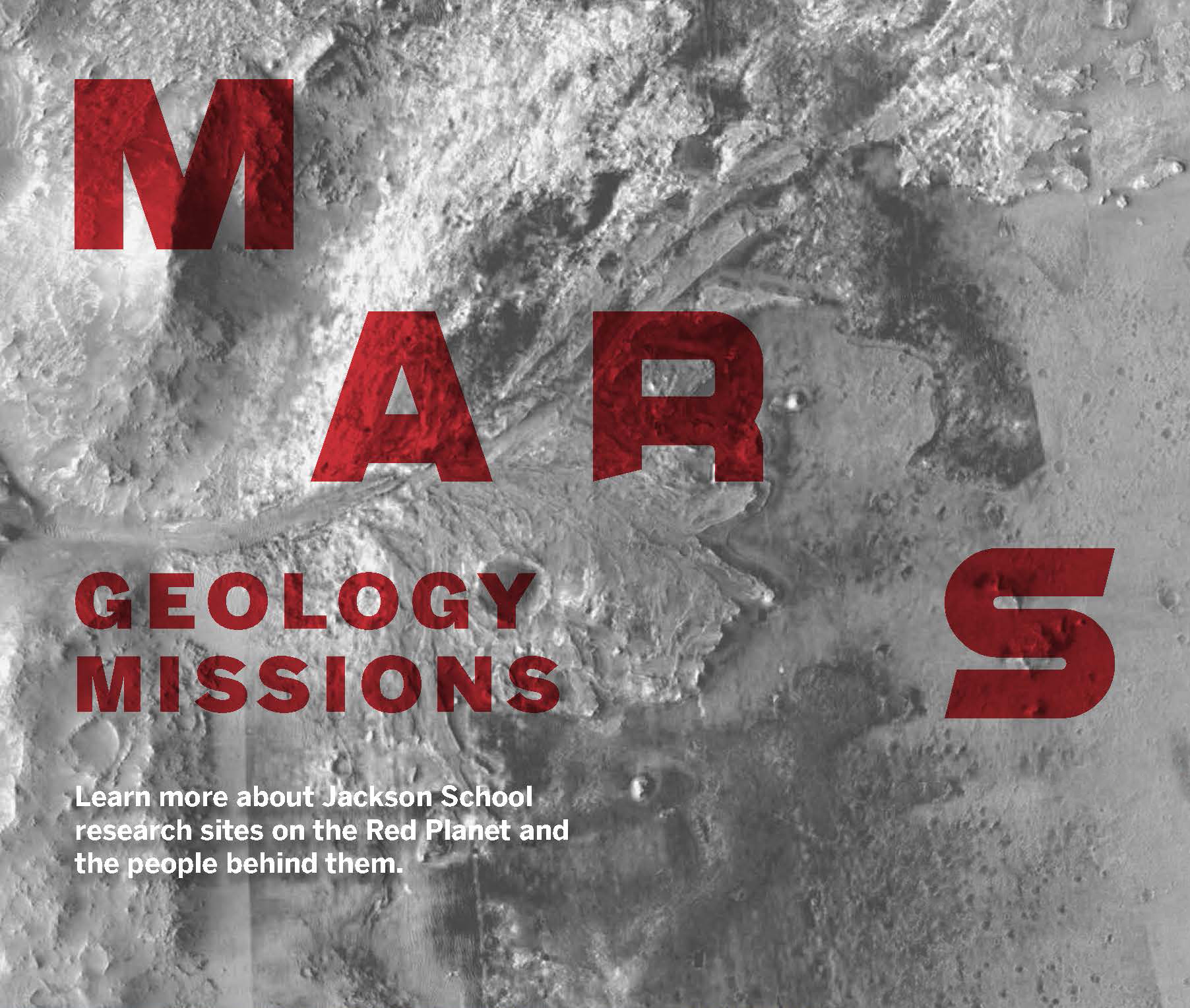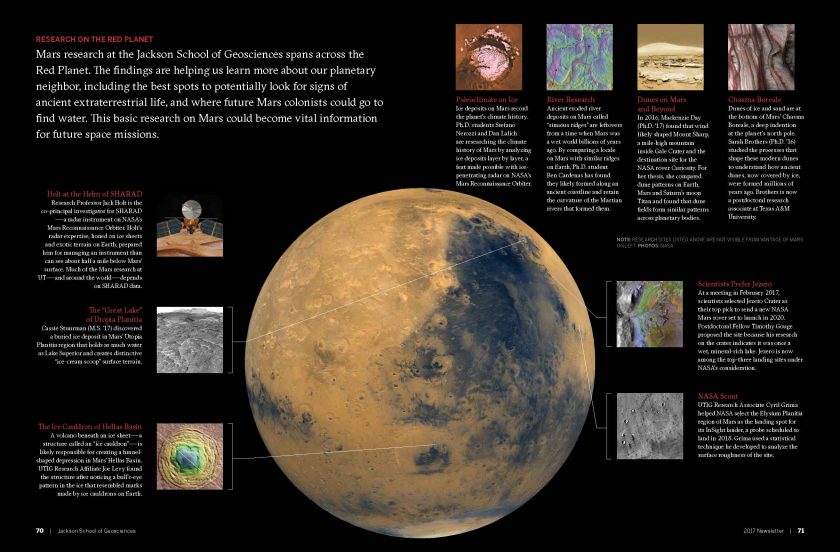Mars Geology Missions
November 7, 2017
As technology has advanced, the planet Mars has gone from a faintly glowing red orb in the night sky to a familiar landscape. The NASA rover Curiosity releases new pictures of the surface of Mars every day while the Mars Reconnaissance Orbiter, a NASA satellite, monitors the planet
from space.
An eclectic group of researchers at the Jackson School of Geosciences is studying the Red Planet from afar using the constant stream of data provided by these NASA probes. Their work is taking them deep inside craters, through millions of years of ice deposits at the Martian north pole, and over sedimentary rock that was deposited when Mars was wet and has since been sculpted by wind into mile-high mounds.
Members of the same group are also studying Mars-like locales on Earth to learn more about what the two worlds have in common.
“Terrestrial analog work is a strength of UT,” said Jack Holt, a research professor at the University of Texas Institute for Geophysics (UTIG) who is leading research on Mars glaciers and similar glaciers on Earth. “We have a really strong, field-based geology program, and when people in the Jackson School do planetary science, they bring a very strong background in the fundamentals in geology based on fieldwork on Earth.”
The Mars researchers are helping develop an understanding of the geological history of our planetary neighbor, and how its distinctive landmarks formed over time. This in turn can improve the understanding of how similar forces shape our own planet and planets outside of our solar system. It is also vital knowledge to have when planning future missions to Mars, whether it’s sending more advanced rovers, or placing the first pair of astronaut boots on the ground. Two recent Jackson School graduates exemplify how conducting Mars research builds skills that can be used for studying Mars or our home planet. Cassie Stuurman, M.S. ’17, will be working at Planet Labs, a company in San Francisco that builds Earth-monitoring satellites. And Mackenzie Day, Ph.D. ’17, will be continuing her research on Mars at NASA’s Astrobiology Institute in Seattle, with the goal of one day making it to Mars herself.
“It’s Mars or bust,” Day said.
Click on the image below to learn more about Mars geology, Mars-like places on Earth, and discoveries made in both places by Jackson School researchers.
Research on the Red Planet
Visiting Mars on Earth
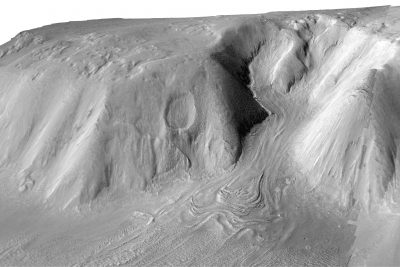
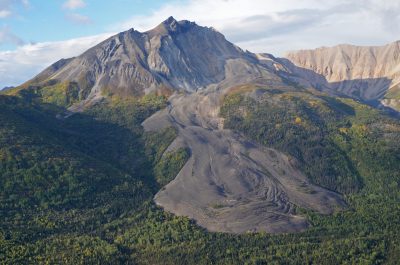
oooooooooooooooooooooooooooooooooooooooooooooooooooooooooooooooooooooooooooooooooooooo
Some environments on Earth have a lot in common with places on Mars. Conduct ng fieldwork here gives research rs a chance to study features found on Mars and familiarize themselves with our own world at the same time.
oooooooooooooooooooooooooooooooooooooooooooooooooo
WET STREAKS IN DRY VALLEYS
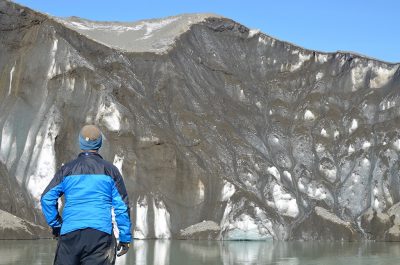
Antarctica’s McMurdo Dry Valleys are the most Mars-like landscape on Earth, said UTIG Research Affiliate Joe Levy, an assistant professor at Colgate University. These isolated, desolate lands have been frozen for more than one million years, with huge deposits of buried ice beneath the ground. In 2016, Levy co-led a mission to map the valleys using airborne LIDAR laser scanning. The project was specifically looking for areas where ice deposits showed signs of melting since the last scan in 2001. These melt features resemble those on Mars that have been observed flowing down certain slopes in warmer seasons.
BURIED GLACIERS
Jack Holt, a research professor at UTIG, is tracking the ice at the center of rockcovered debris glaciers on Earth and Mars. On Sourdough Rock Glacier in the Wrangell–St. Elias Mountains of Alaska, Holt and his students are using airborne photogrammetry, a technique that allows the team to calculate the glacier’s flowrate by studying its surface folds. Ph.D. student Eric Petersen is studying similar glaciers on Mars, using radar data to determine the composition of the ice inside and the thickness of their debris covering. He points out his research might come in handy to future astronauts looking to tap the glacier as a water source.
Back to the Newsletter
